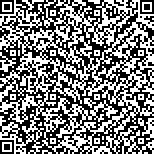| 本文已被:浏览 3277次 下载 1756次 |

码上扫一扫! |
|
|
| 超声冲击强化对TC4钛合金拉压疲劳性能的影响 |
|
曹小建1,2, 片英植3, 金江1, 许罗鹏2,4, 王宠2, 王清远2
|
|
1.南通大学 建筑工程学院, 江苏 南通 226019;2.四川大学 空天科学与工程学院, 成都 610065;3.韩国鲜文大学 机械工程学院, 韩国 牙山 336-708;4.中国民航飞行学院 物理系, 四川 广汉 618307
|
|
| 摘要: |
| 静荷载25 N、振幅30 μm、冲击数36 000次/mm2下对TC4钛合金去应力退火及固溶时效两种状态进行超声表面冲击强化处理,研究其对TC4拉压疲劳性能的影响。对处理后的微观组织、硬度、强塑性变形(SPD)层、残余应力、疲劳性能和断裂特征进行分析。结果表明:处理后在TC4表面均获得约40 μm深的强塑性变形层、表面硬度及残余压应力均被提高、表面粗糙度有较好的维持、两种状态的108周次的疲劳强度分别提升7.0%和10.7%;106周次前裂纹主要由表面萌生,106周次后裂纹源核心表现为SPD层与核心之间的变形α相,其形状狭长且平行于试件边缘。建立经典材料力学模型对其轴向应力进行分析,有助于理解内部裂纹源。 |
| 关键词: 超声冲击 疲劳 裂纹 钛合金 |
| DOI:10.11933/j.issn.1007-9289.20160718001 |
| 分类号: |
| 基金项目:国家自然科学基金(11327801,11502152);江苏省自然科学基金(BK20160416);中国博士后科学基金(2104M552355) |
|
| Effects of Ultrasonic Impact Modification on Tension-compression Fatigue Behavior of TC4 |
|
CAO Xiao-jian1,2, PYUN Young-shik3, JIN Jiang1, XU Luo-peng2,4, WANG Chong2, WANG Qing-yuan2
|
|
1.College of Civil Engineering, Nantong University, Nantong 226019, Jiangsu;2.School of Aeronautics & Astronautics, Sichuan University, Chengdu 610065;3.Department of Mechanical Engineering, Sun Moon University, Asan 336-708, Korean;4.Department of Physics, Civil Aviation Flight University of China, Guanghan 618307, Sichuan
|
| Abstract: |
| The effect of ultrasonic nanocrystal surface modification (UNSM) on the tension-compression fatigue behavior of Ti-6Al-4V (stress-relief annealed or solid solution-aging treated) was studied. UNSM is with a static load of 25 N, vibration amplitude of 30 μm and 36 000 strikes per unit. The microstructure, hardness, severe plastic deformation (SPD) layer, residual stress, fatigue property and fracture mechanism of the alloy after UNSM treatment were analized. The results show that UNSM produces about 40 μm SPD layers on both the two groups of specimens. UNSM increases the hardness and the compressive residual stress. UNSM helps to maintain a good surface roughness. The 108 cycles fatigue strength of the two group samples are improved by 7% and 11.7%, respectively. After UNSM, fatigue cracks mainly initiate from the surface of specimen before the fatigue life of 106 cycles, while they appear at the deformed α-phases at the zone between the SPD layer and the core after the fatigue life of 106 cycles. The shape of the deformed α-phases is long and narrow because of the ultrasonic impacts on the surface, and it is parallel to the edge of specimens. The analysis of the axial normal stress is discussed based on a classical model, which helps to understand the initiation of interior cracks. |
| Key words: ultrasonic impact fatigue crack titanium alloy |